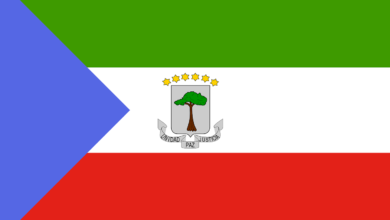The 2023 Conflict in Sudan – What you should know

Many people across the world are left wondering how the 2023 Conflict in Sudan got to this point as explosions reverberate around Khartoum, Africa’s sixth-biggest metropolitan center.
What should you know about the Sudanese conflict of 2023 and what precisely is going on there?
- Since a coup in 2021, two generals have been sharing authority. The head of the Sudanese Army, General Abdel Fattah al-Burhan, comes first.
The second is the commander of the paramilitary Rapid Support Forces (RSF), General Mohamed Hamdan Dagalo (also known as Hemedti).
This power-sharing structure was intended to last only temporarily before giving way to civilian-led democracy. Instead, a dispute arose as a result of the circumstance.
2. Mid-April saw the start of fighting throughout the nation, with Khartoum emerging as a key flashpoint. The Khartoum airport was covered in flames, and the city’s military administration was reduced to a burned-out shell.
3. Foreign officials and residents fled as violence spread throughout Sudan’s largest metropolis.
Nearly 100 individuals were evacuated to the neighboring country of Djibouti in a particularly dramatic incident that took place at the American Embassy. Navy SEALs led them into the plane.
4. There have been several cease-fire agreements so far, but they haven’t really had much of an impact on the fierce fighting.
5. The number of people escaping the conflict as refugees is rising. As many of Sudan’s neighbors have their own recent history of violence and many places are experiencing food insecurity, there is a rising worry that this conflict may lead to even more instability in the area.
Unfortunately, because it has been governed by the military for most of its history, Sudan is no stranger to violence.
Although there is theoretically a truce in effect as of the time of writing this article, combat continues. It will be interesting to watch how far these fighting generals would go to impose their dominance.
Quick Facts About Sudan
Beyond the conflict-related news headlines, many people in the West are unfamiliar with Sudan.
We’ve added additional basic information about the topography, climate, population centers, and other topics to the map above.
Location and Climate
The third-largest country in Africa (and 16th overall) has a wide range of climatic and physical conditions inside its boundaries.
The nation is situated in Northeast Africa, immediately under Egypt. Its climate transitions from desert to tropical roughly along a north-south axis.
In line with other nations whose borders encompass the Sahara Desert, around two-thirds of the country, is arid or semi-arid.
In Sudan, the landscape becomes greener the further south one travels. The significant differences in the region’s vegetation from north to south are depicted in the map below, which also depicts the very young nation of South Sudan.
The Nile River, which supplies two-thirds of the nation’s freshwater, is a notable feature cutting across this dry terrain.
The Blue and White tributaries of the Nile, which originate in South Sudan and Ethiopia, respectively, enter the nation from the south.
When the rivers converge in the middle of the nation, the Nile River continues north until it ultimately reaches Egypt.
As four nations that depend on the river for electricity, fresh water, and irrigation, Sudan, South Sudan, Ethiopia, and Egypt, this flow of water between them may occasionally be a source of conflict.
Populated areas
Sudan has a population of around 43 million people, placing it seventh in terms of population in Africa.
Below, we can see that a large portion of the Sudanese population is concentrated in a few strategic locations, while the majority of the nation is still sparsely inhabited.
Khartoum
The country’s capital and largest city, Khartoum, is situated in Sudan at a key intersection of the Blue and White Niles.
The three areas around the river confluence that make up the fast-expanding metropolis of Khartoum—Khartoum, North Khartoum, and Omdurman—have a combined population of 6.3 million.
There are 18 states in Sudan, five of which make up the western Darfur area. The fact that the term Darfur is well-known is not surprising.
The area went through a war in the 2000s that was characterized by pervasive violence, violations of human rights, and displacement, which led to a humanitarian catastrophe.
Hemedti, one of the generals implicated in the present crisis, oversaw the Janjaweed militias, which were responsible for some of the most heinous crimes committed during the Darfur conflict.
Sudan shares a border with the important Red Sea route in the northwest.
Port Sudan serves as the principal entrance point for imports and the main export route for Sudanese goods, including cattle, minerals, and agricultural goods including cotton, gum arabic, and sesame.
The city has also been chosen to house a Russian naval facility in the near future, however, recent Sudanese political unrest may have made discussions more challenging.
It is unclear how this war will affect the country’s demographic patterns as violence rages on in residential areas and people run for safer locations.
How many individuals will be relocated? Will they come back after the dust settles?





